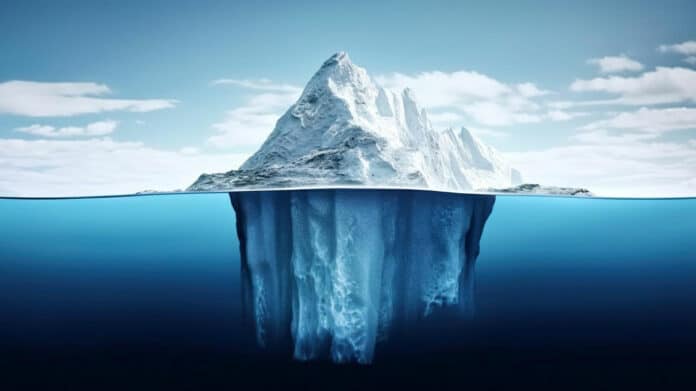It’s amazing to see how technology is advancing in the field of environmental monitoring. Recently, researchers trained an artificial intelligence (AI) system to accurately map the surface area and outline of giant icebergs captured on satellite images in one-hundredth of a second.
This breakthrough will allow for more rapid and accurate analyses of satellite imagery, surpassing the capabilities of current automated systems that often struggle to distinguish icebergs from other features in the image.
Identifying and mapping icebergs in satellite images has always been a time-consuming and meticulous task requiring manual interpretation. Although human analysts can do it more accurately, it still takes several minutes to delineate the outline of a single iceberg. When there are multiple icebergs, the process quickly becomes time-consuming and laborious.
Monitoring icebergs is crucial not only for scientific research but also for maritime safety. Icebergs can be enormous, sometimes the size of small countries, and pose a risk to passing ships. As they melt, they release cold, fresh meltwater and terrigenous nutrients into the seas, which can have a significant impact on marine ecosystems.
“Icebergs exist in hard-to-reach parts of the world, and satellites are not only a fantastic tool to observe where they are, they can help scientists understand the process of how they melt and eventually begin to break apart,” said Dr. Anne Braakmann-Folgmann, who led the study while undertaking doctoral research at the Centre for Polar Observation and Monitoring at the University of Leeds.
“Using the new AI system overcomes some of the problems with existing automated approaches, which can struggle to distinguish between icebergs and other ice floating on the sea or even a nearby coastline which are present in the same image.”
Dr Braakmann-Folgmann and her colleagues used a neural network algorithm known as U-net to train a computer to accurately map the outline of icebergs from images taken by the Sentinel-1 satellite.
The effectiveness of U-net was then compared to two other state-of-the-art algorithms, k-means, and Otsu, used for the same purpose. The algorithms were trained to identify the biggest iceberg in a series of satellite images. The study showed that U-net outperformed the other algorithms in identifying and delineating icebergs under various environmental conditions.
The study also included supporting images and animations that demonstrate U-net’s proficiency in accurately identifying icebergs. On the other hand, other algorithms incorrectly identified a cluster of smaller icebergs and ice fragments or confused icebergs with surrounding sea ice.
Dr Braakmann-Folgmann, now based at the Arctic University of Norway in Tromsø, explained how the new technology could offer more accurate and detailed information about the shape and size of giant icebergs. Unlike current mapping services that only show the midpoint or central location and length of icebergs, this new method can estimate their outline and calculate their area.
“Being able to automatically map iceberg extent with enhanced speed and accuracy paves the way for an operational service providing iceberg outlines on a regular, automated basis,” she said. “Combining them with measurements of iceberg thickness, also enables scientists to monitor where giant icebergs are releasing vast quantities of freshwater into the oceans. There are services that give data on the location of icebergs – but not their outline or area.”
The system has been tested on satellite images of seven icebergs; the images covered all seasons from 2014-2020. Over a series of tests, the U-net algorithm outperformed the other two algorithms and was more effective in delineating the outline of an iceberg in images taken when environmental conditions were challenging, such as the image capturing a lot of ice structures.
U-net maintained a high degree of accuracy, achieving an F1 score of 0.84, compared to the 0.62 scored by the other algorithms.
“This study shows that machine learning will enable scientists to monitor remote and inaccessible parts of the world in almost real-time. And with machine learning, the algorithm will become more accurate as it learns from errors in the way it interprets a satellite image,” said Andrew Shepherd, Professor at the University of Northumbria and one of the co-authors of the study.
Journal reference:
- Anne Braakmann-Folgmann, Andrew Shepherd, David Hogg, and Ella Redmond. Mapping the extent of giant Antarctic icebergs with deep learning. The Cryosphere, 2023; DOI: 10.5194/tc-17-4675-2023
